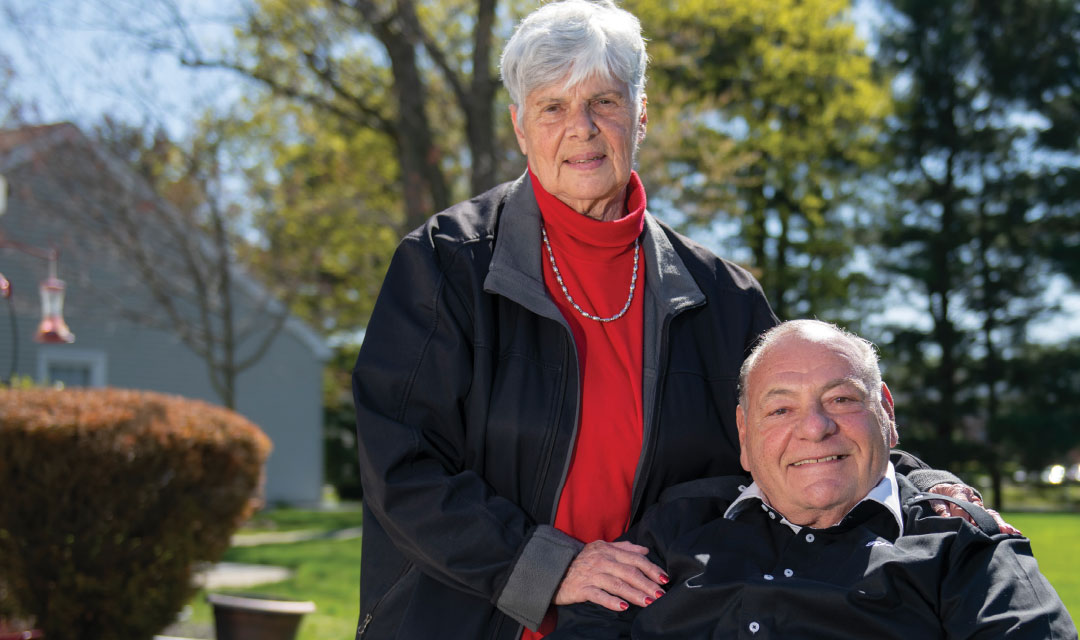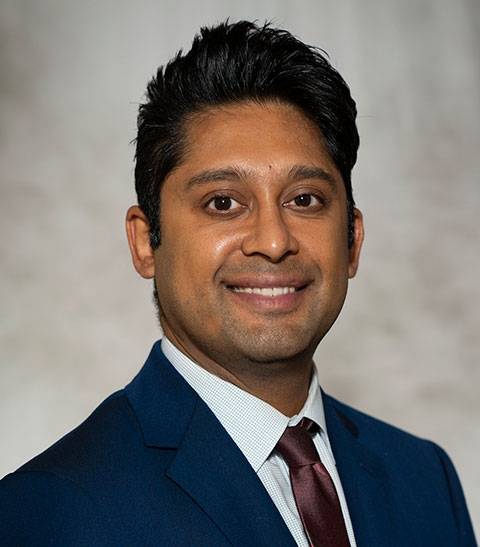“If I needed anything, she [my nurse] was there ready to help in any way before I even put the buzzer down—exceptional and professional service.”

Rocky Volpe of Freehold is the first to admit that he’s put his body through a lot over his 76 years.
“I’ve picked up all sorts of jobs that require heavy lifting,” he says. “Over time, the strain on my back and vertebrae has taken its toll.”
He’s had several operations across the decades at a variety of hospitals.
Most recently, he found himself suffering from intense neck pain that radiated down his shoulders, along with numbness in the fingers of his left hand and gait instability that made everyday activities such as walking a significant challenge.

An orthopedic surgeon who had performed rotator cuff surgery on Volpe years before thought the problem was a pinched nerve in the cervical spine of Volpe’s neck. If true, Volpe would need additional surgery. The doctor had a recommendation: Volpe should seek the care of Chanakya (“Sean”) Jandhyala, MD, an orthopedic surgeon at Community Medical Center (CMC) who excels in spine surgery.
At his first consultation with Dr. Jandhyala, Volpe underwent an MRI scan of his cervical spine to make a firm diagnosis. The scan determined that Volpe indeed was experiencing spinal cord compression, or cervical myelopathy—a degenerative condition that typically triggers neck, arm and instability symptoms like Volpe’s.
“Cervical myelopathy can be due to trauma such as injury from a car accident or as a result of arthritis, which was the cause in this case,” Dr. Jandhyala says. The MRI confirmed that the best course of treatment would be surgery—a procedure called anterior cervical discectomy and fusion.
Deleting Damage
Any spine surgery sounds daunting, but Dr. Jandhyala performs anterior cervical discectomy using minimally invasive techniques. “We make a small incision in the front of the neck to reach the discs of concern, which, in Mr. Volpe’s case, were C5 and C6,” Dr. Jandhyala says. “We remove those discs to relieve compression on the spinal cord and replace them with a metal cage.” A small plate and screws installed with the help of a surgical microscope hold the implant in place.
“The whole surgery takes about an hour and a half, and most patients have the option of going home the same day,” Dr. Jandhyala says. The small incision, measuring 2 to 3 cm wide, heals relatively quickly.
In the case of Volpe’s February 28 surgery for severe spinal cord compression, Dr. Jandhyala advised an overnight hospital stay to ensure Volpe’s recovery was on track before discharge.
Volpe appreciated the extra time, remembering that he’d experienced pain after every major procedure he’s undergone. The moment his eyes opened after surgery, he found a CMC nurse standing by his side waiting to gauge his pain and provide him with immediate relief. “The pain quickly subsided, and this nurse continued to check on me every 15 minutes,” Volpe says. “If I needed anything, she was there ready to help in any way before I even put the buzzer down— exceptional and professional service.”
Steady Process
Dr. Jandhyala was pleased to see Volpe’s neck symptoms improve over the following weeks as Volpe recovered with support from his wife of 56 years, Joanne. “Improvement is gradual, but a major purpose of surgery is to make sure the condition doesn’t continue to get worse,” Dr. Jandhyala says. “The goal was to prevent progression of slow-moving paralysis, with the hope of reversing it, and to keep him from going from a walker into a wheelchair and not being able to walk at all.”
Volpe is pleased with his progress as well. Four weeks after surgery, he could move his neck with ease and no longer tripped over his own feet. He also began physical therapy to build strength in his arms, which promised to help with gait instability and balance issues.
Dr. Jandhyala will track Volpe’s progress every two to three months for at least a year as Volpe continues to recover and improve. “It’s possible he may develop further issues down the road that we can help with,” Dr. Jandhyala says. “But if he’s like most patients who undergo anterior cervical discectomy, he’ll continue to do significantly better.”
What Is Spinal Compression?
The spine consists of bones called vertebrae that are stacked on top of each other with flexible, cushioning discs in between. Seven vertebrae (numbered C1 to C7) that run from the base of the skull to the base of the neck comprise the cervical spine. Running through the spine is the spinal cord, which carries nerve signals from the brain to the body.
A variety of conditions including injury and age-related degeneration of discs can cause bony material of the vertebrae to squeeze or compress the spinal cord and its nerves. This can interfere with nerve transmission and trigger symptoms such as neck pain; loss of balance, coordination and dexterity; and weakness or numbness in hands or arms.
For more information or to make an appointment with Dr. Jandhyala, call 732-349-0988.